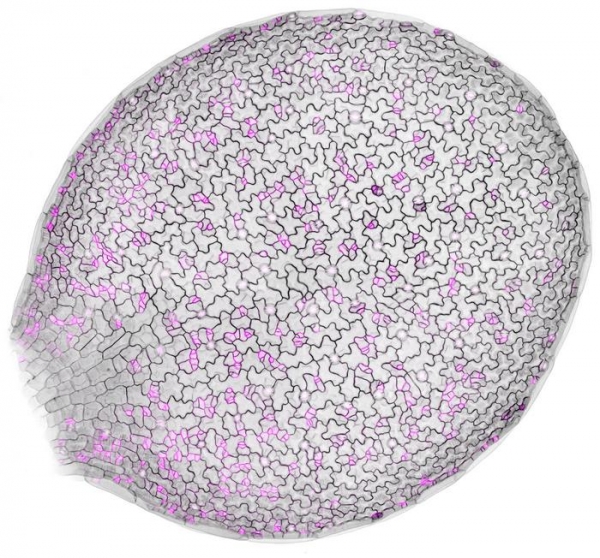Every time a stem cell divides, one daughter cell remains a stem cell while the other takes off on its own developmental journey. But both daughter cells require specific and different cellular materials to fulfill their destinies. Animal stem cells use the cytoskeleton – a transient network of structural tubules – to physically pull the correct materials from the parent cell into each daughter cell during the split. Plants also have stem cells that need to distribute different materials to each of their daughters, but earlier studies seem to have ruled out an “animal-style” cytoskeleton to accomplish this task. And what plants used instead remained elusive – until now.
In a new study published July 6 in Science, researchers at Stanford University found that plant cells also use the cytoskeleton. But there’s a twist. Instead of pulling on the cytoskeleton, like animal stem cells, the plant cells they studied actually pushed it away.
“Instead of using the cytoskeleton to say, ‘Divide this way!’ the plants said, ‘DON’T divide this way!’ ” said Andrew Muroyama, a former postdoctoral fellow at Stanford, currently an assistant professor at the University of California, San Diego, and the lead author of the paper.
Read More: Stanford University
Photo Credit: Andrew Muroyama


